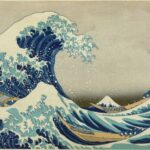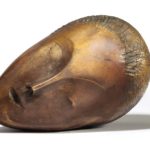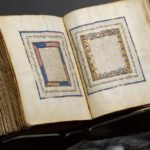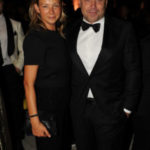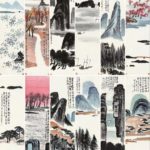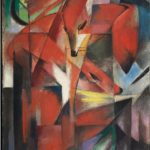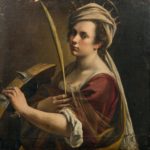
Sittard, Netherlands.- The Museum Het Domein is proud to present “Charlotte Schleiffert: Rozen en Pistolen (Roses and Guns)”, a substantial collection of recent work by the artist. Charlotte Schleiffert gained international recognition with her very expressive drawings and paintings featuring bright colours, impressive formats, and unconventional use of material such as fake fur and adhesive plastic. Issues related to gender play an important role in her engaged work, as do themes such as intolerance, power, violence, oppression, poverty, and alienation. The exhibition at Het Domein is primarily dedicated to the work Schleiffert has done in the past three years and other pieces that have rarely or never been displayed before. As part of the exhibition, the artist will create a new mural. “Roses and Guns” will be on view at the museum from September 10th through January 8th 2012.
 “Roses and Guns” is the first solo museum exhibition of Schleiffert’s work since her exhibition ‘Feel No Shame’ in the Museum Boijmans Van Beuningen, Rotterdam, in 2004. A constant feature in her drawings and paintings since this time are the hybridized beings that appear in them. They unite various cultures, times, and sexes. ‘I want to create a mix of times and locations. My figures are not always happy with their lives and dream of an alternative. They embody the desire for another world,’ Schleiffert explains. Travel has always been an important source of inspiration for her choice of subject and material. In 2007-2008 she was in residence at the Künstlerhaus Bethanien in Berlin, and over the last few years she has been regularly living working and living in Xiamen, China, for longer periods. In Berlin Schleiffert discovered old-fashioned coloured wrapping paper as a background for her small-scale political drawings.
“Roses and Guns” is the first solo museum exhibition of Schleiffert’s work since her exhibition ‘Feel No Shame’ in the Museum Boijmans Van Beuningen, Rotterdam, in 2004. A constant feature in her drawings and paintings since this time are the hybridized beings that appear in them. They unite various cultures, times, and sexes. ‘I want to create a mix of times and locations. My figures are not always happy with their lives and dream of an alternative. They embody the desire for another world,’ Schleiffert explains. Travel has always been an important source of inspiration for her choice of subject and material. In 2007-2008 she was in residence at the Künstlerhaus Bethanien in Berlin, and over the last few years she has been regularly living working and living in Xiamen, China, for longer periods. In Berlin Schleiffert discovered old-fashioned coloured wrapping paper as a background for her small-scale political drawings.
In China she started creating collages made of pieces of satin and calligraphic paintings on rice paper. What is striking about her new work is that Schleiffert has increasingly adopted the role of sculptor. While her earlier paintings often included three-dimensional components, in her more recent work amorphous plaster objects and assemblages play a more independent role. Also new are the small-scale almost entirely abstract paintings that exude the artist’s joy in painting. The exhibition title “Roses and guns” reflects its content. The personal and the political are always closely connected in Schleiffert’s work. In her recent drawings and paintings, seemingly sweet depictions with flower motifs alternate with strongly engaged pieces. With her recent flower and plant motifs, Schleiffert returns to a preoccupation from the period in which she studied at De Ateliers.
Even in the fairy-tale-like world that emerges from these works, disaster lurks. Several figures appear to be trapped in the vegetation; a male figure is entangled up to his crotch in a giant liana. Several recent series of drawings are imbued with visual material that Schleiffert has encountered in newspapers and magazines. In these drawings, she attempts to extract pressing issues from the transience of current media. From a stance of personal engagement, Schleiffert makes a searing commentary on world problems in her work. ‘My anger at the misuse of power, at injustice and hypocrisy, fuels my work. I am strongly against something or feel enormous aggression. Then a painting must be made,’ she once stated in an interview. Just as Schleiffert borrows many of her titles and texts in her work from snippets of sentences from the print media, the title of this exhibition comes from the headline of an article in de Volkskrant newspaper about the commemoration of the Six-Day War in Israel.

The Museum Het Domein pursues a policy based on investigation, originality and creativity. First of all, of course, they investigate trends in contemporary art – the ways in which artists continue to interpret today’s world, each in their own unique visual idiom. At the same time, they investigate the economic, political and cultural backgrounds to these artistic trends from an international perspective, and their implications for the work of the museum in its local setting. In this way we hope to bring about a fascinating series of encounters between our city and the world. Being a relatively young museum, they are blessed with the freedom to pursue an original, independent artistic course. This independence has allowed them to make clear, often unconventional choices in terms of both presentation and collection, rather than attempting to present broad historical overviews or collect contemporary art in an encyclopaedic fashion. They prefer to take a contextual approach in which they endeavour, in a highly personal manner, to keep abreast of contemporary developments in the visual arts and so make their own special contribution to the world of modern art. More specifically, the museum focusses on artists and works with an unusual, independent artistic viewpoint and an explicit response to the world around them. They seek out the trendsetters within a relatively young generation of visual artists (from anywhere in the world) and those that have inspired them, as well as artistic approaches from the past that we believe may be of particular relevance to the present. Pursuing an international policy in a local, peripheral context naturally requires creativity. By consistently setting high standards, seeking partnerships in the Netherlands and abroad, and fostering contacts with a growing cultural audience, the museum has proved again and again that it can achieve amazing results even with limited resources. As the museum’s collection has expanded over the past few years, a ‘debate’ has begun between the various works, shedding more and more light on the nature and coherence of the core collection. Visit the museum’s website at … http://www.hetdomein.nl
